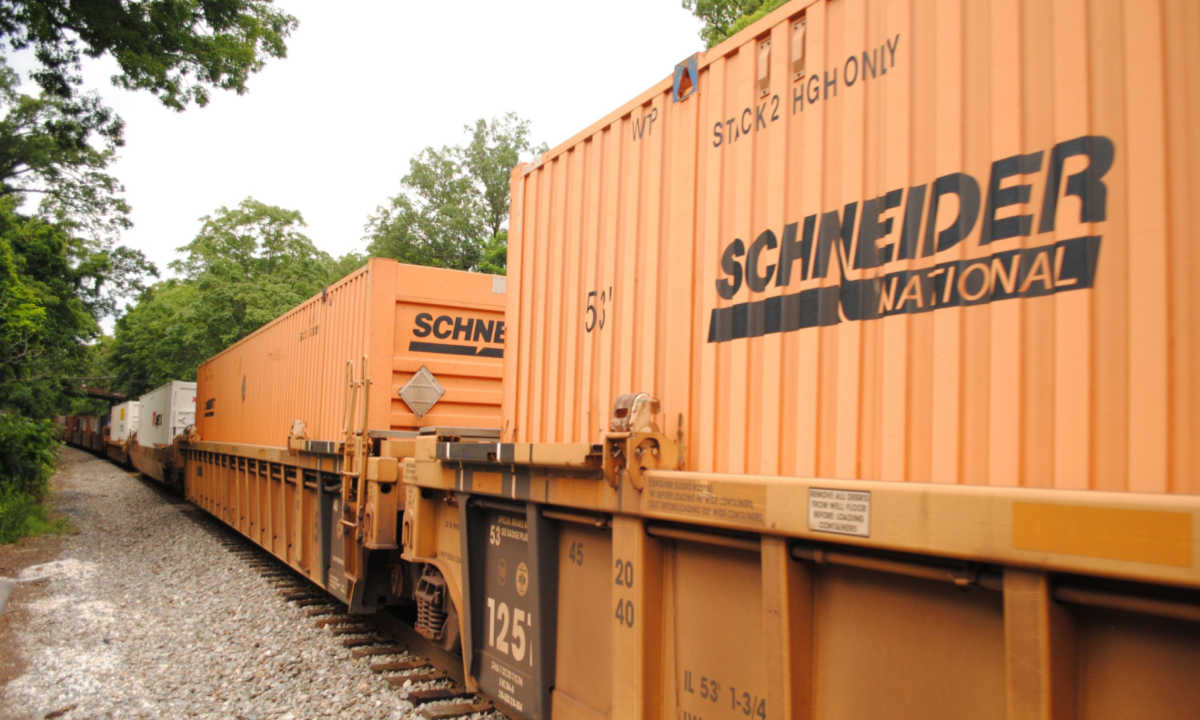
After a chaotic couple of years, the freight transport market is getting back to normal, executives at Schneider National said Thursday (July 28) during the company’s quarterly earnings call.
The transportation and logistics services company reported that its income from operations in the quarter ended June 30 was up 40% compared to the same quarter in 2021. Its truckload segment was up 10%, its intermodal segment was up 22% and its logistics segment was up 178%.
“As strong as the second quarter was, we did observe signs of moderation in freight market conditions as the quarter progressed, consistent with industry narrative,” Schneider CEO and President Mark Rourke said in a statement released along with the earnings call. “However, we continue to expect a constructive freight environment for the remainder of 2022, including a return of seasonality, starting with Fourth of July holiday and back-to-school demand.”
During the call, Rourke said the last couple of years lacked seasonality because everything was on full throttle. Now, the company is seeing normal seasonality, especially in the ebbs and flows of the amount of freight in the retail space moving from vendors and from distribution centers to stores.
Responding to Inflation
In other news, the company was nearly done with its allocation season at the time of the call, and Rourke said customers responded well during the negotiations to the company’s price escalations.
“They’ve been incredibly supportive of the inflationary impacts around driver wages and equipment,” Rourke said. “Coming out of that process, we feel pretty good, and we feel pretty aligned strategically with our customer base, as we look forward to executing on their behalf.”
Asked about congestion and pinch points in today’s supply chain, Rourke said the truckload segment’s trailer pool has been experiencing a dwell time at customer locations that is now even higher than it was during the height of the pandemic. He attributed this to continued labor constraints, seasonality of vacations and the resurgence of COVID-19.
“So, I think we’re still not nearly as fluid, we’re not back to any level of historical standards of turning equipment in our customer locations,” Rourke said.
Scaling a Diversified Platform
On the impact of California’s Assembly Bill 5 (AB5), which requires truckers and other workers to be treated as employees rather than independent contractors if they don’t meet certain requirements, Rourke said Schneider National made changes a few years ago in anticipation of the implementation of the law.
Read more: Protest at Nation’s Fifth Busiest Container Port Fuels Ongoing Supply Chain Crisis
“What surprised me is the number of folks who were willing to move out of the state of California for us to do that,” Rourke said. “So, that’s one component. You kind of change the geographic mix of your fleet.”
Looking ahead, Rourke said that while the market chaos of the last two years is moderating, Schneider National’s portfolio is well positioned for what’s to come.
“We’re continuing to execute on our strategy of growing and scaling this highly diversified multimodal transportation and logistics platform, and we want to offer great value to a wide array of shippers’ freight needs.”